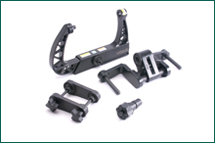When Computer Numerical Control (CNC) turned the machining world on its ear, entire industries jumped on board and happily churned out parts by the thousands without the added cost of humans controlling production.
However, what CNC machining did not offer until more recently was the ability to create prototypes at a reasonable cost. Although humans don’t need to be present throughout production, they do need to set everything up. As a result, this does not become cost effective until many parts are produced.

Technology to the Rescue
Computer system designers tackled this issue with technologies you may have heard of called stereolithography (SLA), fused deposition modeling (FDM) and selective laser sintering.
Basically, this took the setup from the factory floor to a software package where 3D models could be developed and tested using a Computer Aided Drawing (CAD). Now the CAD models can move through to a solid prototype without an expensive and time-consuming setup.
The prototypes become hardware during a process when a CAD design is sliced into thin, virtual layers. The layers are made from resin and are laid down one on top of the other until a 3D object is produced.
Drawbacks of “Layers”
Oftentimes, the prototypes delivered from this approach are not made with the same material as the final product and cannot be rigorously tested. Another obstacle is the “fixturing” that still needs to be done on prototypes. This is an inefficient “manual” process. While a prototype is possible, developing a true production part for testing is not cheap.
Automating the Prototype Build
Advances in vertical and horizontal machining of parts have allowed manufacturers to run rigorous tests on portions of a prototype. The machining technologies used can develop the part from a single block of material. Plus, it’s completely automated.
Now the prototypes no longer have the visible “layers” in the finished part, and they’re also more durable.
Obviously, this is only a very brief discussion of prototype production from a CAD file. To see the full capabilities of this technology and more, contact PDS today.
